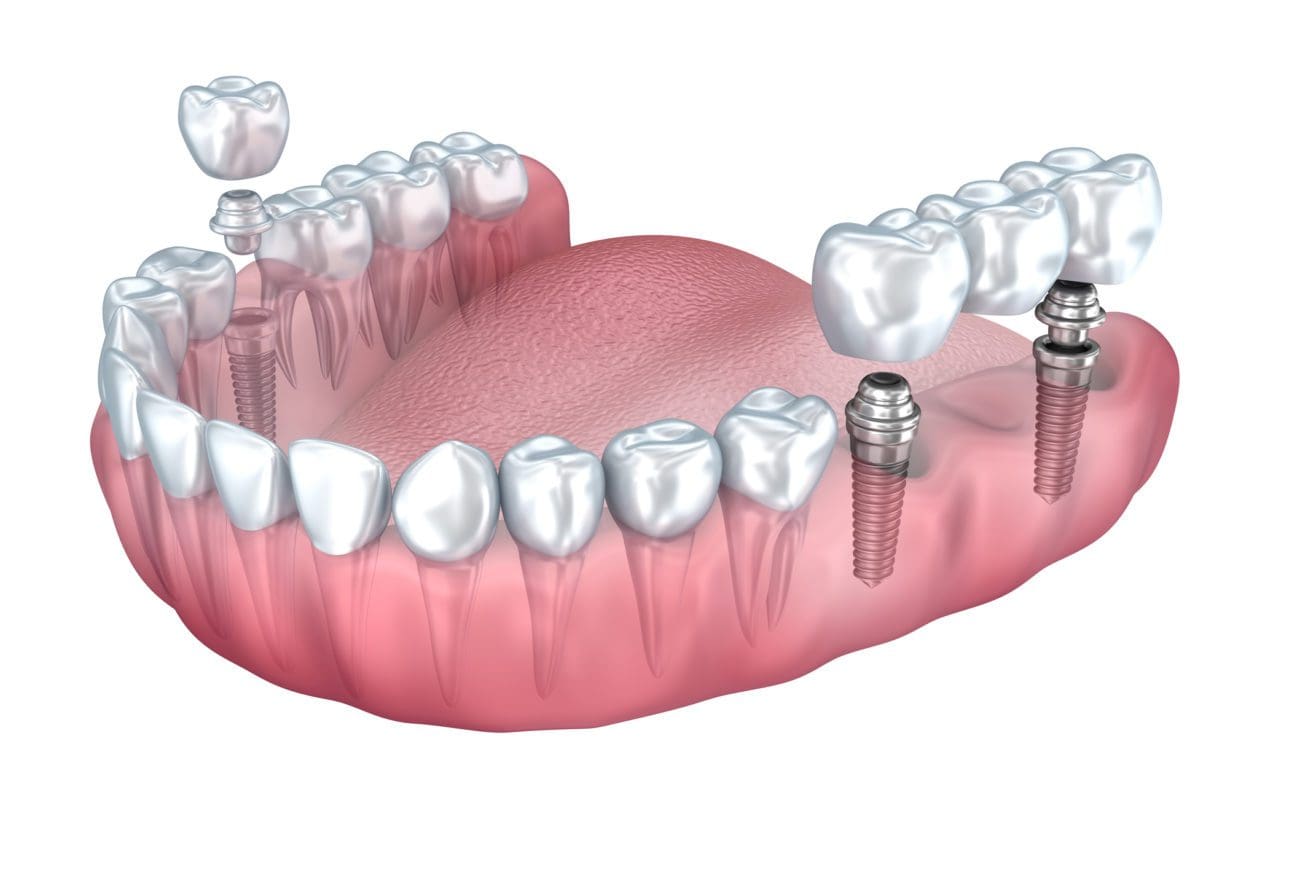Little Known Facts About Dental Sense.
Little Known Facts About Dental Sense.
Blog Article
All about Dental Sense
Table of ContentsNot known Details About Dental Sense Dental Sense Fundamentals ExplainedSome Known Questions About Dental Sense.What Does Dental Sense Do?
are clinical tools operatively implanted into the jaw to recover an individual's capability to eat or their appearance. They offer support for artificial (phony) teeth, such as crowns, bridges, or dentures. When a tooth is shed due to injury or disease, a person can experience problems such as quick bone loss, malfunctioning speech, or modifications to eating patterns that result in discomfort.Oral dental implant systems include a dental implant body and dental implant abutment and might additionally include a joint addiction screw. Root canal procedure. The oral implant body is surgically put in the jawbone instead of the tooth's root. The oral implant abutment is generally connected to the dental implant body by the abutment fixation screw and expands via periodontals into the mouth to sustain the affixed man-made teeth
(https://sitereport.netcraft.com/?url=https://nearme.vip)Structure of The Dental Implant System choosing oral implants, talk with your oral provider regarding the potential benefits and threats, and whether you are a candidate for the procedure. Things to consider: Your total wellness is a vital variable in determining whether you are an excellent prospect for dental implants, the length of time it will take to heal, and how much time the dental implant may remain in location.
Cigarette smoking might influence the healing procedure and reduce the long-lasting success of the dental implant. The healing procedure for the implant body might take a number of months or longer, throughout which time you commonly have a momentary abutment instead of the tooth. the oral implant procedure: Thoroughly follow the dental hygiene directions given to you by your oral service provider.
Examine This Report on Dental Sense
Implant failing can lead to the demand for one more procedure to take care of or replace the dental implant system. Brings back the capacity to chew Restores aesthetic appearance Assists maintain the jawbone from reducing due to bone loss Protects the health and wellness of the bordering bone and periodontals Helps keep nearby (nearby) teeth steady Improves lifestyle Damage to bordering all-natural teeth during dental implant positioning Injury to the surrounding cells during surgical treatment, such as sinus perforation Injury during surgery (as an example, crack of bordering jawbone) Inadequate feature, such as seeming like the teeth do not bite together normally An experience that the tooth is loose or twisting in location resulting from a joint screw loosening Implant body failure (looseness of the implant body) as a result of systemic infection, which may be most likely in individuals with unchecked diabetes mellitus as a result of regional infection in bone and gum tissues sustaining the dental implant body because of postponed healing, which may be most likely in individuals that smoke Problem cleaning the gums around the implant, causing poor oral hygiene Without treatment periodontal illness Post-surgical numbness because of nerve impingement or damage Constantly alert health and wellness treatment providers and imaging technicians that you have oral implants prior to any magnetic resonance imaging (MRI) or x-ray procedures.
FDA is not mindful of any unfavorable events reported for MRI or x-ray procedures with oral implants. Oral implants systems are usually made from materials that comply with worldwide agreement standards of the International Company for Standardization (ISO) or ASTM International. These requirements have details of what makes a safe material.

A dental implant is a structure that changes a missing tooth. With screw-like tools, the surgeon inserts an implant right into the jawbone, and it acts as a support for a fabricated tooth, called a crown.
How Dental Sense can Save You Time, Stress, and Money.
Some people are not eligible for dental implant surgical treatment. It is for oral surgeons to run on people with: acute illnessuncontrollable metabolic diseasebone or soft tissue disease or infectionIf these problems are solved, an individual can have the surgical procedure. In, oral doctors avoid operating individuals with: If people with any of the above undergo dental implant surgery, there is a higher threat of the dental implant failing.

Oral dental implant surgical procedure is a tailored process. It's not the same for everybody. Yet the following gives a general introduction of what you can anticipate your dentist, dental surgeon, periodontist or prosthodontist to do: Place the implant operatively. Provide you time to heal. Attach the article and last crown, bridge or denture.
Next off, your cosmetic surgeon will very carefully put the oral implant right into your jaw. If your dental implant is near the front of your mouth, your dental practitioner will certainly make a short-lived tooth for you to put on up until you heal.
The 8-Second Trick For Dental Sense
Your company can inform you what to expect in your situation. Throughout the recovery stage, your jawbone must fuse to the oral implant. This procedure, called osseointegration, is important for stability and long-lasting success. This process can take anywhere from three to nine months. In some cases, it may take longer.
As soon as your dental implant heals, your dental practitioner can attach the abutment (tiny connector message) and your final restoration (crown, bridge or denture). This normally takes about one hour to complete and may call for a 2nd minor surgical procedure. You should not feel any kind of pain throughout your dental implant procedure due to the fact that your copyright will use medication to numb your gum tissues.
Report this page